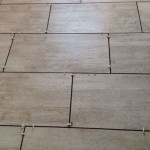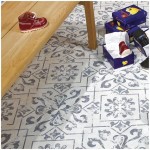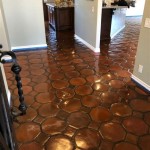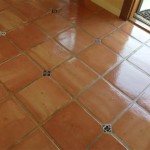How To Install Backer Board For Tile Shower Walls
Installing backer board for tile shower walls is a crucial step in ensuring a long-lasting and waterproof tile installation. Backer board, typically cement board or fiber cement board, provides a stable and moisture-resistant substrate to which tiles can be adhered. This prevents water damage, mold growth, and tile failure, which can occur when tile is applied directly to drywall or other unsuitable materials. This article outlines the process of installing backer board in a shower, covering preparation, cutting, fastening, and sealing.
Preparing the Shower Area
Before any backer board installation can commence, the shower area must be thoroughly prepared. This preparation stage is critical for ensuring a successful and durable outcome. The foundation of a stable and watertight shower lies in this initial groundwork.
First, remove all existing fixtures, including showerheads, faucets, and any remnants of old tiling or wall coverings. Ensure the studs are exposed and free of any debris such as nails, screws, or adhesive residues. Inspect the studs for any signs of rot, mold, or damage. Replace or reinforce any compromised studs to provide a solid framing structure. Studs must be plumb and aligned to ensure the backer board surface is flat and even.
Next, check the stud spacing. Standard stud spacing is typically 16 inches on center. If the spacing deviates from this standard, adjustments may be necessary to provide adequate support for the backer board. Furring strips can be added to the studs to achieve the correct spacing or to correct minor alignment issues.
Once the studs are prepared, apply a waterproofing membrane to the shower pan or floor. This is a crucial step to prevent water from seeping behind the backer board and causing damage to the subfloor. Follow the manufacturer’s instructions for the selected waterproofing membrane, ensuring complete coverage and proper curing time.
Finally, inspect the drain assembly. Ensure it is properly installed and sealed to prevent leaks. The drain should be level with the finished floor surface once the tile is installed. Any discrepancies in the drain height must be addressed before proceeding with the backer board installation.
Cutting and Fitting the Backer Board
Accurate cutting and fitting of the backer board are essential for achieving a professional and watertight tile installation. Precise measurements and careful cutting techniques are necessary to minimize gaps and ensure a seamless surface.
Begin by measuring the dimensions of each shower wall section where the backer board will be installed. Use a measuring tape to determine the height and width of each area, accounting for any obstructions such as plumbing fixtures or windows. Transfer these measurements to the backer board sheets. It is recommended to double-check all measurements before cutting to avoid errors.
Backer board can be cut using several methods, including scoring and snapping, using a circular saw with a specialized backer board blade, or using a utility knife with multiple passes. The scoring and snapping method involves scoring the surface of the backer board with a utility knife along the measured line, then snapping the board along the score. This method is suitable for straight cuts and can minimize dust. When using a circular saw, wear a dust mask and eye protection to prevent inhalation of fine particles. Follow the saw manufacturer's instructions for safe and proper operation. Make straight and clean cuts, minimizing chipping or uneven edges.
After cutting the backer board, dry-fit the pieces onto the shower walls to ensure a proper fit. Check for any gaps or overlaps, and make adjustments as needed. Pay close attention to corners and edges, where a tight fit is crucial for preventing water infiltration. Use a rasp or sandpaper to smooth any rough edges or minor imperfections.
When fitting the backer board around plumbing fixtures, use a hole saw or jigsaw to create precise openings. Measure the diameter of the pipes and transfer these measurements to the backer board. Drill a pilot hole and then use the appropriate size hole saw to cut the opening. Ensure the openings are slightly larger than the pipes to allow for expansion and contraction. Caulk or seal around the pipes after the backer board is installed to prevent water from penetrating behind the board.
Leave a small gap, approximately 1/8 inch, between the backer board sheets to allow for expansion and contraction. These gaps will be filled with sealant later in the process. Stagger the seams between rows of backer board to increase the overall strength and stability of the wall. This will help prevent cracking and movement in the tile installation.
Fastening and Sealing the Backer Board
Proper fastening and sealing of the backer board are critical for creating a watertight and durable shower wall. The correct fasteners and sealant, combined with proper installation techniques, will ensure the backer board remains securely attached and effectively prevents water penetration.
Use corrosion-resistant screws specifically designed for backer board installation. These screws are typically coated or made of stainless steel to prevent rust and degradation in the moist shower environment. Avoid using drywall screws, as they are not designed for wet environments and can corrode over time. The length of the screws should be sufficient to penetrate the studs at least one inch. This ensures a secure hold and prevents the backer board from loosening.
Space the screws approximately 6 to 8 inches apart along the edges of the backer board and 8 to 12 inches apart in the field. Ensure the screws are driven flush with the surface of the backer board, but not so deep that they damage the board's surface. Countersink the screws slightly to create a smooth surface for tiling. Use a screw gun with an adjustable clutch to prevent over-tightening. Over-tightening can strip the screw threads and weaken the connection.
Once the backer board is fastened, apply seam tape to all joints between the sheets. Use a mesh tape specifically designed for cement board or fiber cement board. Apply a thin layer of thin-set mortar over the seams, embedding the tape into the mortar. Use a taping knife to smooth the mortar and remove any excess. Ensure the tape is completely covered and that the surface is flush with the surrounding backer board. Allow the mortar to dry completely before proceeding. This process reinforces the seams and prevents cracking.
After the thin-set mortar has cured, apply a waterproof sealant to all seams, corners, and around plumbing fixtures. Use a sealant that is specifically designed for wet environments and compatible with both the backer board and the tile adhesive. Apply a bead of sealant along the seams and corners, and then smooth it with a finger or a sealant tool. Ensure the sealant completely fills the gaps and creates a watertight barrier. Pay close attention to areas where the backer board meets the shower pan or floor, as these are particularly vulnerable to water infiltration.
Finally, inspect the backer board installation for any gaps, cracks, or imperfections. Fill any remaining gaps with sealant or thin-set mortar. Ensure the surface is smooth and even to provide a stable base for the tile installation. Allow the sealant and mortar to cure completely before proceeding with the tile installation. This curing process is essential for ensuring the longevity and water resistance of the shower wall.
Specific Considerations for Cement Board vs. Fiber Cement Board
While both cement board and fiber cement board are common choices for shower walls, they have distinct properties that warrant consideration during installation.
Cement board is typically heavier and more brittle than fiber cement board. This can make it more challenging to cut and handle, but it also provides excellent rigidity and water resistance. When cutting cement board, it's crucial to use a saw blade designed for cement board to minimize chipping and dust. Proper ventilation and respiratory protection are essential when working with cement board due to the dust produced during cutting.
Fiber cement board is lighter and more flexible than cement board, making it easier to handle and cut. It tends to produce less dust when cut, but it's still advisable to wear a dust mask and eye protection. Fiber cement board may require more support, especially in larger sheets, to prevent sagging or warping. Ensure the stud spacing is appropriate for the thickness of the fiber cement board being used.
Both types of backer board require the same fastening and sealing techniques. Use corrosion-resistant screws and seam tape, and apply a waterproof sealant to all seams and corners. The choice between cement board and fiber cement board often comes down to personal preference, budget, and the specific requirements of the shower installation.

How To Install Cement Board For Tile Projects Diy Family Handyman

The Best Way To Waterproof Your Shower Before Tiling Inspired Hive

Tile Backer Board Installation Key Steps For A Quality Armchair Builder Blog Build Renovate Repair Your Own Home Save Money As An Owner

How To Install Cement Board For Tile Bower Power
How To Install Shower Backerboard Hardieboard Cement Proper Installation Diy

Tile Backerboard Material Options Fine Homebuilding

How To Install Cement Board For Tile Projects Diy Family Handyman

Installing Cement Board In The Bathroom Angie S Roost

How To Install Cement Board For Tile Bower Power

Tile Installation Backer Board Around A Bathtub Family Handyman
Related Posts








